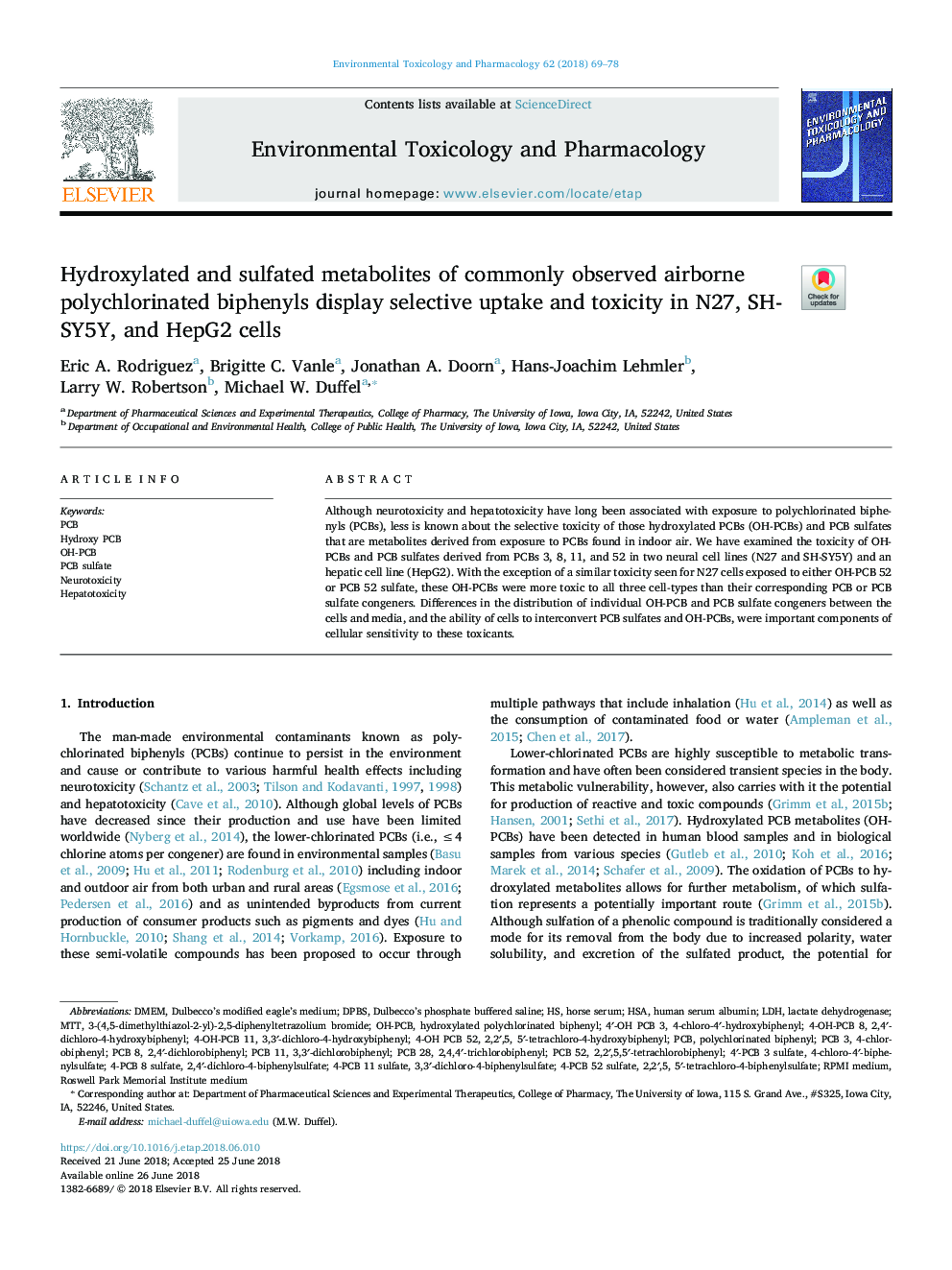| Article ID | Journal | Published Year | Pages | File Type |
|---|---|---|---|---|
| 8545719 | Environmental Toxicology and Pharmacology | 2018 | 10 Pages |
Abstract
Although neurotoxicity and hepatotoxicity have long been associated with exposure to polychlorinated biphenyls (PCBs), less is known about the selective toxicity of those hydroxylated PCBs (OH-PCBs) and PCB sulfates that are metabolites derived from exposure to PCBs found in indoor air. We have examined the toxicity of OH-PCBs and PCB sulfates derived from PCBs 3, 8, 11, and 52 in two neural cell lines (N27 and SH-SY5Y) and an hepatic cell line (HepG2). With the exception of a similar toxicity seen for N27 cells exposed to either OH-PCB 52 or PCB 52 sulfate, these OH-PCBs were more toxic to all three cell-types than their corresponding PCB or PCB sulfate congeners. Differences in the distribution of individual OH-PCB and PCB sulfate congeners between the cells and media, and the ability of cells to interconvert PCB sulfates and OH-PCBs, were important components of cellular sensitivity to these toxicants.
Keywords
DMEMRPMI mediumPCB 52OH-PCBDPBSHSAPCB3-(4,5-dimethylthiazol-2-yl)-2,5-diphenyltetrazolium bromide4-ChlorobiphenylMTThuman serum albuminPolychlorinated biphenylhorse serumNeurotoxicityHepatotoxicityDulbecco’s phosphate buffered salinelactate dehydrogenaseLDHDulbecco’s modified eagle’s mediumRoswell Park Memorial Institute mediumhydroxylated polychlorinated biphenyl
Related Topics
Life Sciences
Environmental Science
Health, Toxicology and Mutagenesis
Authors
Eric A. Rodriguez, Brigitte C. Vanle, Jonathan A. Doorn, Hans-Joachim Lehmler, Larry W. Robertson, Michael W. Duffel,
